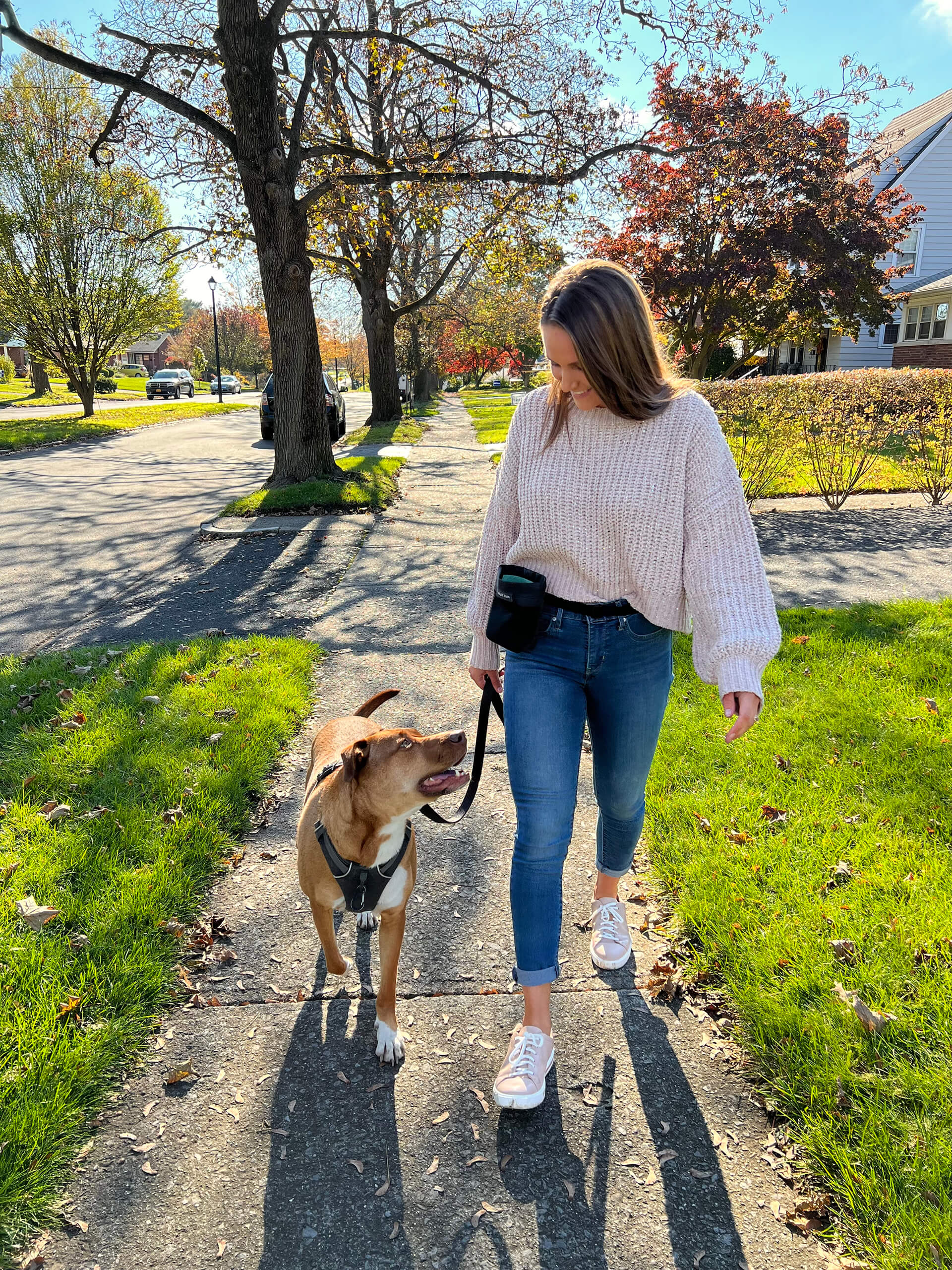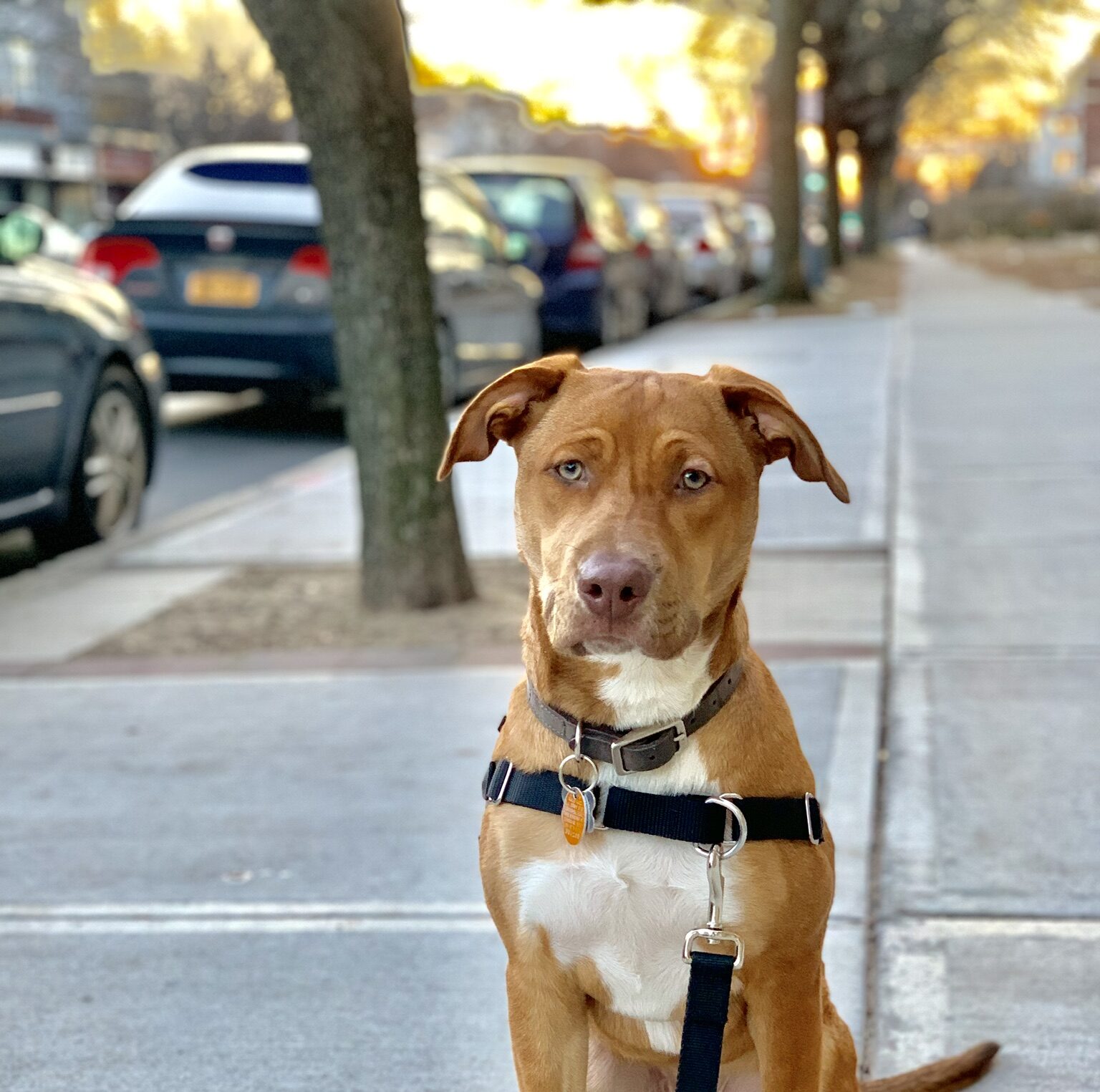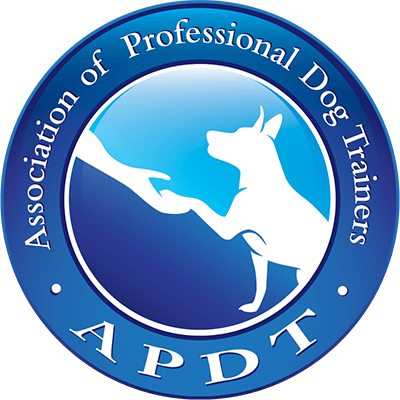Harnesses do not Cause Pulling…

… but I will tell you what does.
A lack of proper leash training is the true cause of pulling on leash.
We all do it – we get a new puppy or newly adopted dog, it’s a beautiful day, and we decide to put a leash on them and go for a walk. Before we know it, our dog has forgotten all about us while we hang on for dear life at the other end of the leash. What is our natural reaction? To pull back. What is their natural reaction? To pull harder. This results in frustration on both ends of the leash, the potential for injury for all parties, as well as a general lack of connection and communication. So you may be thinking, “Maybe it’s time for a harness?”. You hop online, and all you see are pictures of sled dogs and you start to question, “Is a harness going to cause my dog to pull more?”.
If that is the only thing you plan to change about your walk, then… possibly.
When a dog shows up to a consultation choking themselves at the end of their leash, you better believe I am switching them to a harness, and here’s why: 1. Pressure around the neck no longer means anything to them, they have learned to ignore it (or in most cases, lean in harder) 2. There is a potential that they could do long term damage to their trachea and 3. We need a fresh start – a new sensation to the body that we can use as a signal to change their behavior.
When I introduce a harness, however, I also introduce new rules to your dog:
1. When you feel tension on the leash, it now means we do not move forward,
2. Instead, tension on the leash now means it is time to check in with your handler (and get a reinforcement for making that choice!) and
3. You will get where you want to go (when safe and appropriate) but the leash must be loose.
Also, not every harness is for every dog. Consult with a professional before using a new tool on your dog. I used a front-clip Easy Walk harness with Murphy as a puppy and ended up causing injury to his shoulder. He was much happier and more comfortable on a back clip harness (and this did not result in more pulling!). If something doesn’t feel right, trust your gut.
A harness, like any tool, is just that – a tool. What will really change your walks is clear communication, reinforcing good decisions, not allowing pulling to mean forward movement, and teamwork. Our goal is always to get any dog off of any tool as soon as possible, but when you are fighting against a reinforcement history for pulling, it can take time. Be patient, meet your dog where they are at, and stop believing everything you see on social media! Your dog will thank you for it.







